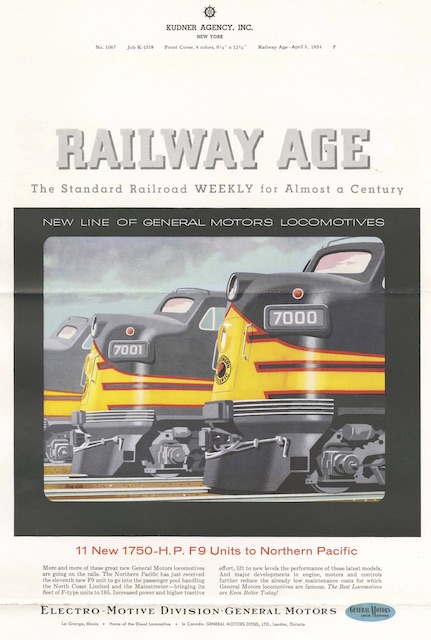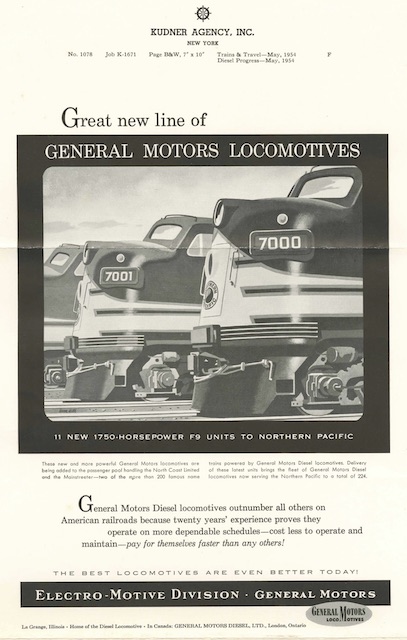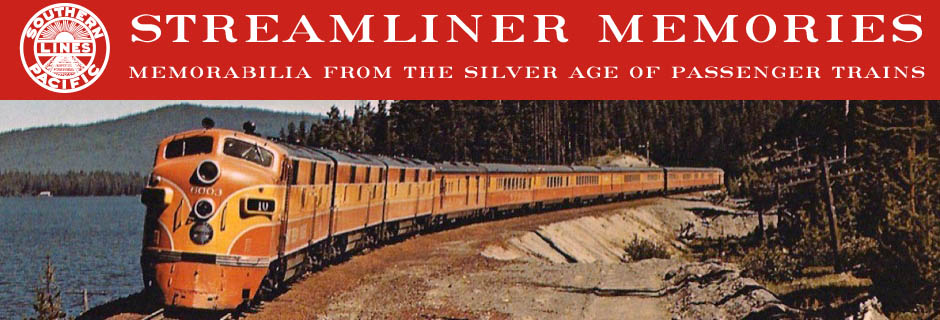I’ve shown this ad before in a post on Bern Hill’s artwork for General Motors. Since then I’ve acquired these sample advertisements distributed by the Kudner Agency of New York.
 Click image to download a 836-KB PDF of this ad.
Click image to download a 836-KB PDF of this ad.
First is the four-color ad as it appeared on the cover of Railway Age on April 5, 1954. I don’t have the actual cover, but judging from other covers with GM ads, it probably used a bright color for the background around the magazine title.
Second is a black-and-white version of the same ad as it appeared in the May, 1954 issues of Trains and Travel (a short-lived name for Trains magazine) and Diesel Progress magazines. Trains placed the ad on the first page after the inside front cover.
 Click image to download a 684-KB PDF of this ad.
Click image to download a 684-KB PDF of this ad.
The ads promote the 1,750-horsepower F9 locomotive, the last of the famous “bulldog” streamlined locomotives produced by General Motors. Its predecessor, the 1,500-horsepower F7, was the second-most popular locomotive GM ever built, as the company sold 4,230 of them, including A, B, and passenger units (A units built slightly longer to house a steam generator). Despite the horsepower boost, GM sold only 345 F9s (including A, B, and passenger units).
Instead of the F9, the railroad industry flocked to the GP9, which was contemporaneous with the F9. Both had 1,750 horsepower, but the GP9 was less expensive to build, easier to maintain, and offered switching crews better visibility. As a result, the GP9 became the most popular locomotive GM ever built, as the company sold 4,377 of them.
The ad says “the Northern Pacific has just received the eleventh new F9 unit to go into the passenger pool handling the North Coast Limited and Mainstreeter, yet the locomotives in Hill’s painting are in the freight color scheme. NP numbered its passenger F9s in the 6700s, while the freight F9s were, as shown, in the 7000s. Photographic evidence indicates the 6700s were delivered in the Loewy color scheme.
NP eventually owned about 70 F9s, but I’m not sure how many were used for passenger service: according to Wikipedia, it was ten, but the NP Historical Society’s Diesel roster lists nineteen F9s that were originally numbered in the 6700 series. As passenger service declined, many of these were renumbered in the 7000 series, and some may have been renumbered immediately on delivery if NP decided it didn’t need as many locomotives in its passenger pool as it thought.
